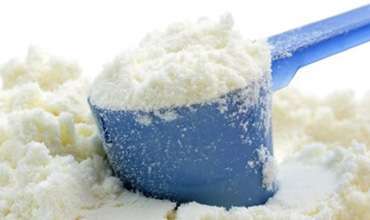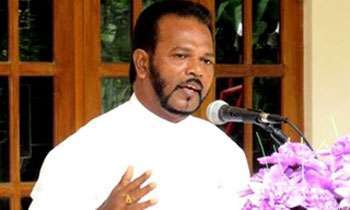Central Bank leaves policy rates unchanged
The Monetary Board of the Central Bank of Sri Lanka, at its meeting held on 17 August 2022, decided to maintain the Standing Deposit Facility Rate (SDFR) and the Standing Lending Facility Rate (SLFR) of the Central Bank at their current levels of 14.50 per cent and 15.50 per cent, respectively.
In arriving at this decision, the Board considered the latest model-based projections, which point towards a larger than expected contraction in activity and a faster than expected easing of price pressures, compared to the previous monetary policy review, the Bank said in a media release on Thursday.
Here is the full statement issued:
Contractionary monetary and fiscal policies already in place, alongside the measures to curtail non urgent import expenditure, are expected to result in a notable contraction in credit to the private sector and possible upside risks to unemployment in the near term. The Board was of the view that despite headline inflation being projected to remain elevated in the near term, the policy measures taken by the Central Bank and the Government thus far would help contain any aggregate demand pressures, thereby anchoring inflation expectations, along with the anticipated decline in global commodity prices and its pass-through to domestic prices in the period ahead.
Global economic growth is expected to slow at a faster pace
As per the July 2022 update of the World Economic Outlook (WEO) of the International Monetary Fund (IMF), global economic growth is estimated to moderate to 3.2 per cent in 2022 from 6.1 per cent recorded in 2021. Tighter financial conditions adopted by central banks around the world following the emergence of inflationary pressures, a slowdown in the Chinese economy due to the resurgence of COVID-19, among others, and further negative spillovers from the geopolitical tensions in Eastern Europe have dampened global growth prospects. Global inflation remains high mainly due to elevated energy and food prices as well as supply-demand imbalances, while downside risks emerge in the outlook for global inflation in the near to medium term.
Domestic economic activity is expected to record a notable downturn
The impact of persisted supply side disruptions, primarily due to shortages of power and energy, and uncertainties associated with socio-political developments are expected to have caused significant adverse effects on economic growth in Q2 2022, while such impact is expected to have continued through Q3 2022 as well. That, coupled with the already recorded negative growth in Q1 2022 and contractionary policies, could result in a larger than expected contraction in real activity in 2022.
However, real GDP growth is expected to recover in the period ahead, with the envisaged stabilisation of macroeconomic conditions and implementation of structural reforms in the economy.
Despite heightened challenges, positive developments are observed in the external sector
Merchandise trade deficit continues to decline in cumulative terms, reflecting mainly the impact of policy measures to curtail non urgent imports, while earnings from exports continue to remain high. Foreign exchange inflows in the form of workers’ remittances remain lower than expected, while improvements are observed in the tourism sector, with increasing tourist arrivals.
Pressures witnessed in the domestic foreign exchange market have eased to a large extent with the notable decline in import expenditure and improved conversions of repatriated export proceeds, supported by the strengthening of monitoring mechanism of export proceed repatriation and conversion.
Accordingly, the exchange rate remains broadly stable within the market guidance that commenced from mid-May 2022, while the gap between the curb market and official exchange rates has declined notably in recent weeks, and such gap is expected to remain narrow in the period ahead with the improvements in the liquidity conditions in domestic foreign exchange market. Meanwhile, reflecting the impact of improved forex liquidity and securing of sizeable financing assistance, the availability and distribution of essential commodities, such as fuel, cooking gas, medicine, fertiliser etc., have notably improved.
Arrangements are in place to secure continuous supply of such essential commodities in the period ahead. Gross official reserves, as at end July 2022, are estimated at US dollars 1.8 billion, including the swap facility from the People’s Bank of China equivalent to around US dollars 1.5 billion, which is subject to conditionalities on usability. Negotiations with the IMF towards reaching a staff-level agreement on the Extended Fund Facility (EFF) arrangement are scheduled in coming weeks, while expeditious measures are being taken to advance the debt restructuring process with the assistance of financial and legal advisors.
Market interest rates have increased further in response to tight monetary and liquidity conditions
Reflecting the transmission of significant monetary policy tightening measures introduced thus far by the Central Bank, market interest rates have increased notably amidst tight money market liquidity conditions. Growth of credit to the private sector is on a declining trend. The year-on-year growth of credit granted to the private sector slowed down notably in June 2022, with a contraction in absolute terms over the previous month, reflecting the impact of significantly high effective market interest rates and moderation of economic activity. Net foreign assets of the banking system continued to contract, weighing down the expansion of broad money supply.
With increasing interest rates, a notable deceleration in the growth of credit to the private sector and broad money supply is expected in the period ahead. Monetary financing has reduced notably in August 2022, while the need for further monetary financing is expected to be low in the period ahead, supported by fiscal consolidation measures that have already been introduced, alongside the implementation of cost-reflective pricing by major state-owned-business enterprises. Meanwhile, currency in circulation, which remains large, is returning to the banking system with the high deposit interest rates prevailing at present.
The pace of acceleration of inflation has moderated faster than expected
Headline inflation rose at a slow pace in July 2022, compared to recent months. Such moderation is expected to continue in the period ahead, thereby resulting in a low level of inflation by end 2022, compared to previous projections. Accordingly, the latest near term forecast of headline inflation shows a faster deceleration, compared to the previous monetary policy review, mainly due to downward revisions to administered prices and their second-round impact, together with the moderation in certain food prices and the stability in the exchange rate. With subdued aggregate demand pressures resulting from tight monetary and fiscal conditions, expected improvements in domestic supply conditions along with the anticipated normalisation in global food and other commodity prices, and the favourable statistical base effect, headline inflation is expected to moderate going forward, and is projected to stabilise in the desired range over the medium term.
Policy rates are maintained at current levels
In consideration of the current and expected macroeconomic developments as highlighted above, the Monetary Board of the Central Bank of Sri Lanka, at its meeting held on 17 August 2022, decided to maintain the Standing Deposit Facility Rate (SDFR) and the Standing Lending Facility Rate (SLFR) of the Central Bank at their current levels of 14.50 per cent and 15.50 per cent, respectively. The Board was of the view that the effective market interest rates are notably high and policy measures that have already been implemented by the Central Bank would continue to be further transmitted to the overall economy. The Central Bank would continue to monitor domestic and global macroeconomic and financial market developments and stand ready to take appropriate measures proactively to stabilise inflation at the desired range and help reinforce greater macroeconomic stability in the period ahead.
-
Still No Comments Posted.














Leave Comments